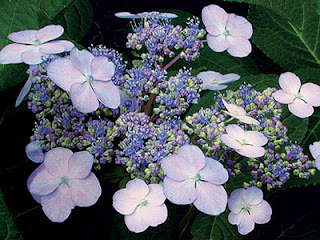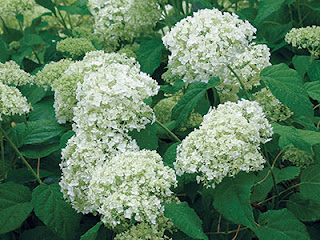by
My garden is my favorite place to be. I love everything about it- from planning to starting seeds inside to digging in the dirt. But gardening can sometimes seem like an overwhelming venture for those just starting out.
So if this is your first year gardening- or if you are a beginner who was seriously overwhelmed last year- here are 11 tips for beginning gardeners to reduce wasted time, energy and resources as well as prevent getting in over your head.
If you are BRAND new gardener, be sure to also check out my list of Common Mistakes Made By Beginning Gardeners– so you don’t make them!
11 Tips for Beginning Gardeners
1. Start Small
I know, you want to feed your family all summer long. Or you want to preserve food for the winter. Or you want to try every single seed from the catalogs. Trust me, if you start out with a huge garden you will get overwhelmed.
If this is your first year gardening, take it slow. Plant a few tomatoes and peppers. A small herb garden. Some beans and lettuce. Maybe some onions. Get used to how certain plants grow and their needs. Try out something like Square Foot Gardening to grow a lot of food in a smaller space.
Keep your small plot weeded, watered and pest-free. If all goes well this first year, you can expand just a bit more the following year.
2. Plant what you eat [mostly]
Do you love fresh tomatoes and tomato sauce? Is salsa your thing? Then tomatoes should definitely be on your to-grow list. Are potatoes detested by the entire family? You might want to skip them. If you only use peppers in salsa and the occasional stir-fry or soup, 1 or 2 plants is probably enough.
That being said, homegrown food is always better. Have you tasted a pea straight from the garden? There is no comparison to the bland store-bought varieties. Especially in the case of picky kids, growing your own, and letting them help, will help them expand their palate and introduce new foods. Gardening is also an excuse to build up your own tastes.
Your menu might never include kale, cabbage or chard- unless it’s right outside your door begging to be used. Once you have your gardening legs under you don’t be afraid to try a few new things!
My article on the 11 Easiest Vegetables to Grow for Beginners will give you the basics of how to grow some of the easiest and most popular crops.
3. Plant to your climate
Knowing your zone is one of the most important parts of gardening. It will determine what you can plant and when. If you live in a colder northern climate you will have to pick more cold-weather crops and short-season varieties of all the others.
If you live in an area that stays warm much of the year you will plant your warm season veggies much earlier than much of the country. When choosing your seeds, pay attention to how many days it will take to mature as well as what growing zone it is best suited for.
4. Pay attention to Plant Spacing
I know many home gardeners- myself included- that try to squish as many plants in an area as possible in the name of conserving space and making room for more plants. This is not the best practice as it tends to invite more pests and disease into your garden as well as having plants that are not as strong and healthy since they will be competing for light and space.
You can usually get by with somewhat smaller spacing than seed packets tell you, but make sure that each plant has ample nutrients and sun. You can also use vertical gardening techniques to conserve space.
Here’s my guide on correct garden spacing, and you can get a chart for space recommendations for common crops.
5. Use Mulch
I don’t know any true statistics, but I would think that weeds are the #1 gardener frustration. They grow fast and can choke out your plants in a matter of days. Weeding should be done daily, but if you don’t want to spend hours and hours on your knees pulling weeds, mulch can be your best friend!
Mulching your plants will help to choke out the weeds as well as protect from soil loss and retain moisture. You have a lot of choices when it comes to mulch- from wood chips or grass clipping to straw or plastic. You can use one or all sorts of different mulches, but get that soil covered!
6. Write it down!
Don’t rely on your memory when it comes to the garden. Keep a journal- sketch out your garden so that you can rotate crops next year, keep a list of pests you fought, of what did well and what didn’t, and any other thoughts that might help you.
Also make sure to label you plants in your garden. Some seeds are slow to germinate and you might forget that a plot was already planted. It is also helpful to label different varieties so you can begin to keep tract of which do best in your garden- there is no sense in wasting money on seeds that never produce well!
7. Learn your plants. And your Weeds.
There is nothing quite like tending a tiny little corn seedling for weeks until it blossoms into a lovely shoot of grass! It is helpful to become familiar with what certain plants look like as seedlings- so that you can pull the weeds and not the plants.
It is equally as helpful to know your weeds as small shoots and seedlings so that you are cultivating plants not weeds (of course don’t forget about your edible weeds as well, some are easier to grow than greens!)
8. Amend your soil.
Healthy soil makes healthy plants. Your soil is the most important part of your garden- poor soil will not produce much more than unhealthy plants. Before starting your garden each year make sure you amend the soil with well-rotted manure or compost.
Feed your soil and plants throughout the year with manure, compost tea or Epsom salts. At the end of the season top your beds with chopped leaves or sow a cover crop that will provide some green manure for the following year. Your plants can tell you a lot of about the condition of your soil- check out my article on Soil Nutrient Deficiencies and How to Fix Them for some tips on diagnosing common nutrient deficiencies.
9. Be Prepared for Pests.
Don’t be fooled into thinking that you can just plant your garden and let Mother Nature take care of the rest. There will be pests and you will have to do something about them if you want your plants to survive.
Read up on companion planting and other organic measures of garden pest control. Be prepared to get up close and personal with the insect pests and pick them off! But remember, a few bug holes in your kale or tomatoes never hurt anyone. Cut off the offensive part of the produce and eat up!
10. Don’t forget the flowers.
Unless you have a garden full or greens and roots, you will need pollinators to help your garden grow to its potential. Planting flowers around your vegetable beds- and in them too- will help draw in bees and other pollinators as well as beneficial insects that will help you fight your garden pests.
Plus they are beautiful, smell wonderful, and make a room and yard that much more cheerful! Here’s a list of Flowers to Grow in the Vegetable Garden.
11. Water when needed
Water is just as important as healthy soil. Too much water can cause disease in plants- and too little- well they just won’t grow. Most plants need a deep watering at least once a week, so if Mother Nature doesn’t take care of it you will need to step up to take the job.
Just remember that it is best to water the base of the plants as opposed to from above, so using a drip hose or irrigation is better than a sprinkler that sprays water through the air. Watering early is the morning or in the evening is best to minimize water loss from evaporation.
If you are new to gardening I would love to hear what the hardest part for you is. And if you are experienced, what advice would you give to those just starting out?
source: https://thefreerangelife.com
































